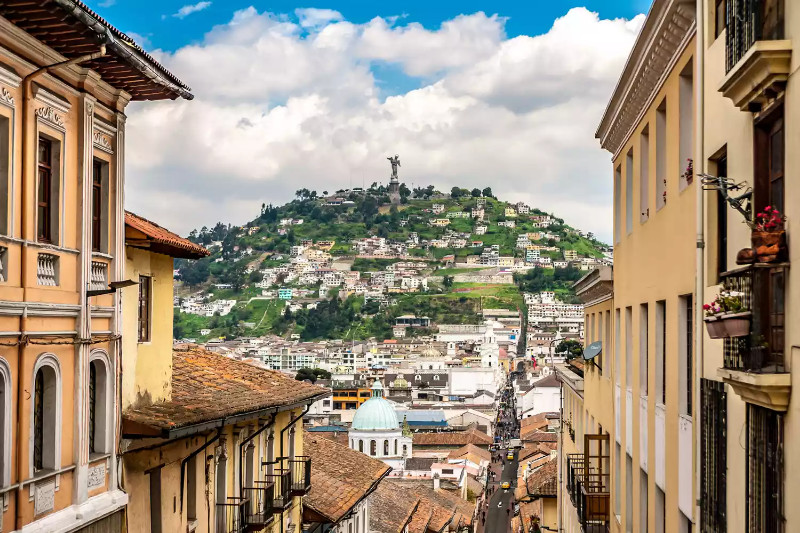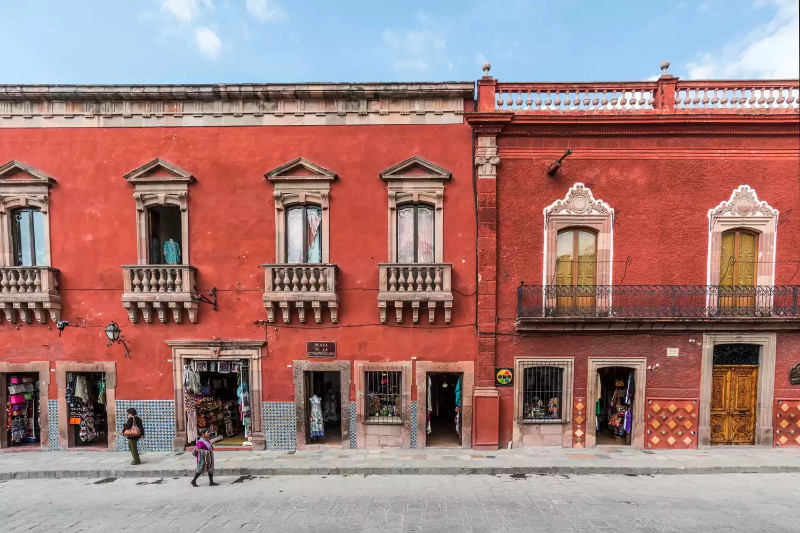Retirement plans are as unique as the individuals who are looking forward to the day when work, at least as they know it, comes to an end. For some, retirement can mean a career change to a long wished for profession or more time to devote to a hobby or passion. For many retirees, whether for adventure, change of scenery, or reduction in living expenses, moving to another country is a goal.
It’s well-known that moving outside the U.S. can help reduce living costs – particularly if the retiree is leaving a large city. Just as at home, though, costs vary depending on location, lifestyle, and personal needs. However, if the goal is to reduce expenses, most retirees can accomplish that and live quite well in a variety of countries.

Photo: Eduardo Fonseca Arraes/Getty Images
From Latin America to Asia and Europe, retirees are finding homes and plenty of expat communities where living is more affordable. Weather, location, health care access, language, visa qualifications, and income requirements are among the many considerations that go into deciding on a retirement home. Financial advisors, experienced travelers, and expat retirees can help with advice, and the Social Security Administration, Internal Revenue Service, and State Department also have important information to offer. Data from Numbeo, updated as of June 2022, is used here for cost of living comparisons.
These are some of the countries that offer retirees an opportunity to enjoy a comfortable lifestyle and lower cost of living.
Mexico

Photo: Jorge Ivan Vasquez Cuartas/Getty Images
Just south of the United States border with warm weather, a wide variety of places to live, miles of coastline, and beautiful cities, Mexico is a popular destination for retirees as well as vacationers. Staying at a resort is different from living in a place full-time, though, so plans to retire in Mexico – or any retirement destination – should include a lengthy stay before a commitment in order to get a better feel for the place as a home.
The cost of living is low overall, and looking at individual cities is important. In Cancun, a tourist area on the Caribbean coast, the cost of living is 61% lower than in New York, for comparison purposes, and rent is 85% lower. In San Miguel de Allende, a charming city in Mexico’s interior popular with expats, the cost of living is 57% lower than in New York, and rent is 76% lower. These and other cities offer reduced expenses along with the amenities that come with living in a resort or expat community.
Health care is available through government programs that cover low-income residents or require payment of premiums. Private hospitals and specialists offer high-quality care at relatively low cost, and many retirees maintain private insurance or pay cash for medical services.
There are minimum income requirements of around $2,100 monthly for temporary residents and $2,700 for permanent residents. Bank account requirements are about $36,000 and $149,000 respectively. Applications for visas and residence permits are handled through the Mexican Consulate, and additional information is available here.
Ecuador
With miles of Pacific coastline, an active volcano, natural beauty, and several expat communities, Ecuador, the gateway to the Galápagos, attracts retirees from the United States and other countries. Ecuador uses the U.S. dollar as its currency, and many people in the major cities speak English.
The overall cost of living in Ecuador is 49% lower than in the United States. In the city of Cuenca, a UNESCO World Heritage Site and popular community for expats, the cost of living is 62% less expensive than New York, and rents are about 88% lower. Located in Ecuador’s highlands, Cuenca enjoys a moderate climate, reducing costs for both heating and air conditioning.
High-quality health care is available at lower cost than in the United States, and all citizens and visitors are guaranteed services. Foreign retirees can join the government system for around $100 monthly for full coverage, or they can provide proof of private insurance. Permanent Residence Visas are available once an individual has lived in Ecuador for at least 21 months under a temporary visa. Minimum income, real estate investments, or bank deposits are required as part of the temporary visa application.
Costa Rica

Photo: Douglas Rissing/Getty Images
This Central American country stretches from the Pacific to the Caribbean, with jungles, rainforests, modern cities, and beaches. Climate, environment, and costs vary throughout the country, but the overall cost of living is about 38% lower than in the United States, and housing is 72% lower on average, based on June 2022 data.
In the city of San Jose, the country’s capital located in the central valley, the cost of living is 55% lower than in New York, and rents are 82% lower. Retirees can choose to live within the city itself or in the mountainous suburbs, but either way, they have access to the amenities offered by San Jose as a popular tourist destination. Residency programs include the Pensionado visa, which requires a monthly income of at least $1,000 to be transferred to a Costa Rican bank for expenses. The Rentista Program, for those without a monthly pension, requires a minimum of $60,000 or monthly income of at least $2,500 from a guaranteed source for at least two years.
Excellent health care is available through public and private programs. The national medical program, with no co-pays or exclusions, is available to residents along with the option of private health care with out-of-pocket costs that can be self-insured or paid through a private insurance policy.
Portugal

Photo: Getty Images
Portugal has become one of the most popular destinations for both retirees and visitors of all ages from around the world who adore its beautiful scenery, coastal cities, wine, food, and mild weather. The cost of living is about 37% lower than in the U.S., and housing is around 54% more affordable. Those margins widen in the capital of Lisbon, where the cost of living is about 53% less, and rent is about 70% lower.
Retirees must apply at a local consulate for a residence permit which is valid for five years and then for a permanent permit when that expires. The “Golden Visa” program, created to encourage foreign investment in Portugal, requires minimum investments in scientific research, real estate, or monetary transfers. Interested retirees with funds to invest should check current details.
Excellent health care is available, and legal residents are able to register with the National Health Service for access to public hospitals and health centers, paying for services as they go. For others, health care is generally covered by private insurance which is required as a condition of receiving a residency permit.
Panama

Photo: Getty Images
Named to the top spot of “Best Places to Retire in 2022” on International Living’s Annual Global Retirement Index, Panama has become a popular retirement destination. Its proximity to the United States and convenient travel options, together with its climate and low cost of living, have gotten the attention of retirees. On average, housing costs are about 58% lower than in the U.S., and the overall cost of living is about 31% lower. Costs vary depending on location, but for example, in Panama City, the cost of living is 49% lower than in New York, and rents are about 74% less.
The government has made residency in Panama especially attractive with the Pensionado visa, a plan that requires pension income of at least $1,000 a month with benefits that include discounts on a variety of services and a tax exemption on importing household goods. With a valid passport, visitors can stay for three months, and for permanent residency, a local immigration attorney must handle the details.
Panama has a two-tier health care system with public and private hospitals, clinics, and doctors, both requiring co-payments for services, with lower costs in the public system. Most retirees choose the private system which offers excellent care and facilities at reasonable prices, covered by private insurance or self-pay.
Vietnam
On the other side of the world, Vietnam is a very affordable place to retire, especially for adventurous retirees who appreciate the country’s beaches, scenery, food, history, and culture. The overall cost of living is about 49% lower than in the United States, and rents are about 75% lower, depending on the location. In Ho Chi Minh City (formerly Saigon), home to the largest expat community according to International Living, the cost of living is 62% lower than in New York, and housing is about 83% lower.
Since the government owns all the land and foreigners are restricted from purchasing property, most expats and retirees rent, an economical way to go. Obtaining a visa is not as straightforward in Vietnam as in many other countries, but it’s possible to apply for long-term stays or business visas.
High-quality health care is very affordable, with both public and private systems. Most expats carry international health insurance and take advantage of private hospitals. According to International Living, “The most prestigious hospital group in Vietnam is Hoan My Medical Corporation, with hospitals and clinics across the country. City International Hospital in Ho Chi Minh city is the biggest international hospital, where a quarter of the patients are foreigners and most of the medical staff speaks English.”
Montenegro
A popular tourist destination with a coastline on the Adriatic and stunning beachfront resorts, Montenegro is starting to get noticed by expats and retirees. Its beautiful scenery, European location, welcoming populace, and low cost of living make it an attractive place to retire. The average cost of living is 48% lower than in the United States, and rents are about 75% lower. In the capital and largest city of Podgorica, the cost of living is 64% lower than New York, and housing is about 90% lower.
Visas of various types can be obtained from the Government of Montenegro, and there are provisions for becoming a permanent resident. Investment in Montenegro is encouraged with a variety of incentives, and foreigners are able to buy property. Montenegro is a member of NATO and is expected to join the European Union in the coming years.
Both private and public health care are available in Montenegro. Retirees and expats generally purchase private coverage, including medical evacuation which provides the option of receiving medical treatment in another country if needed.
Colombia

Photo: Devasahayam Chandra Dhas/Getty Images
This South American country, located on the continent’s northwest coast has beaches, rainforest, mountains, and a variety of cities. The cost of living in Bogota is about 62% lower than in the United States, and rent is 82% lower. Costs vary among cities and inland communities, and a variety of housing is available. In the city of Bogota, the cost of living is 71% lower than in New York, and housing is 88% lower. Colombia’s health care system features modern public and private hospitals, with high-quality affordable care. The public health plan is available to citizens and holders of a national ID card, including expats, with payment of premiums. Private insurance is also available.
Several visa categories include the Pensionado visa, most commonly used by retirees. To obtain the visa, applicants must prove a minimum monthly income of at least three times the minimum salary in Colombia. Income can come from pensions, Social Security, or savings. Currently the minimum required monthly income is approximately $750. After five years, retirees can apply for a resident visa. Visa holders can also apply for a Foreign ID Card which provides access to the health care system and other benefits.




